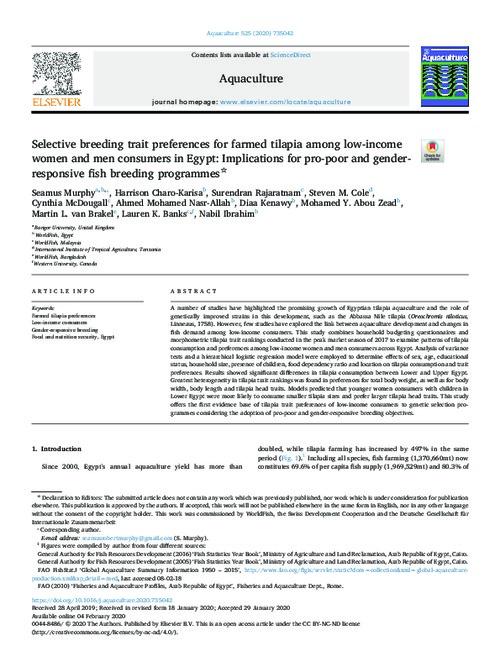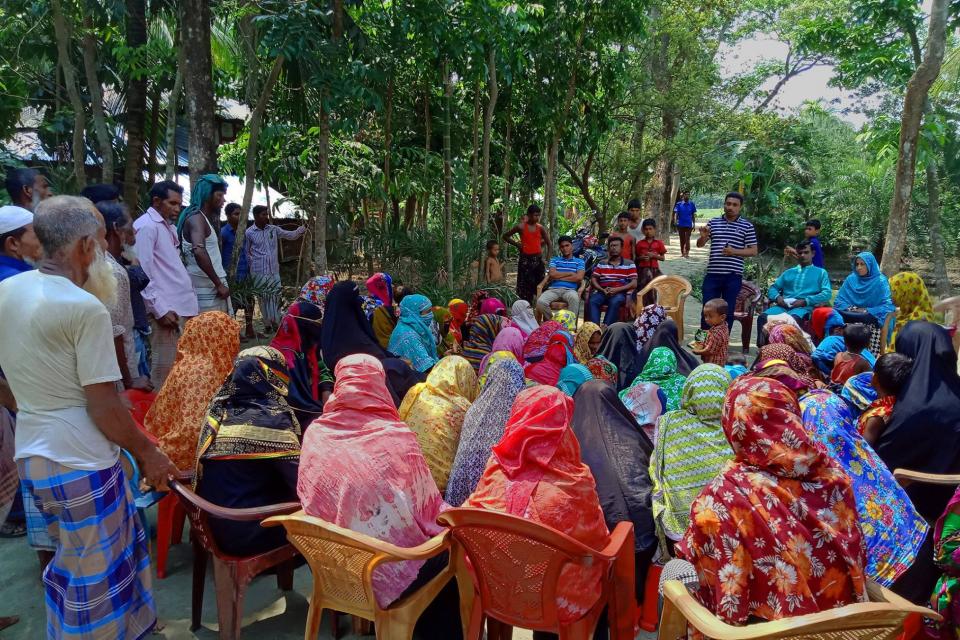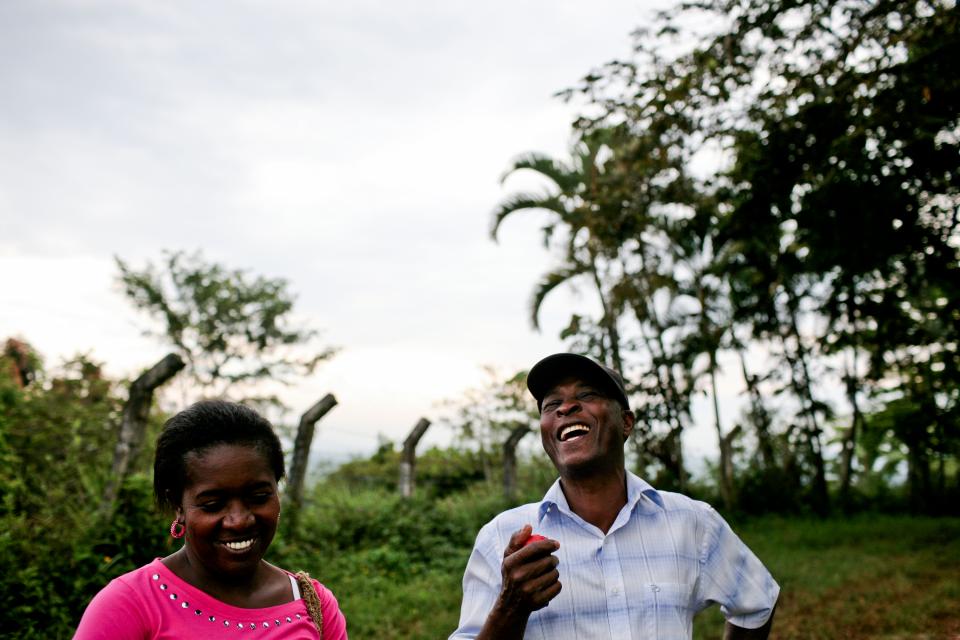G+ tools for gender-responsive breeding of new crop varieties
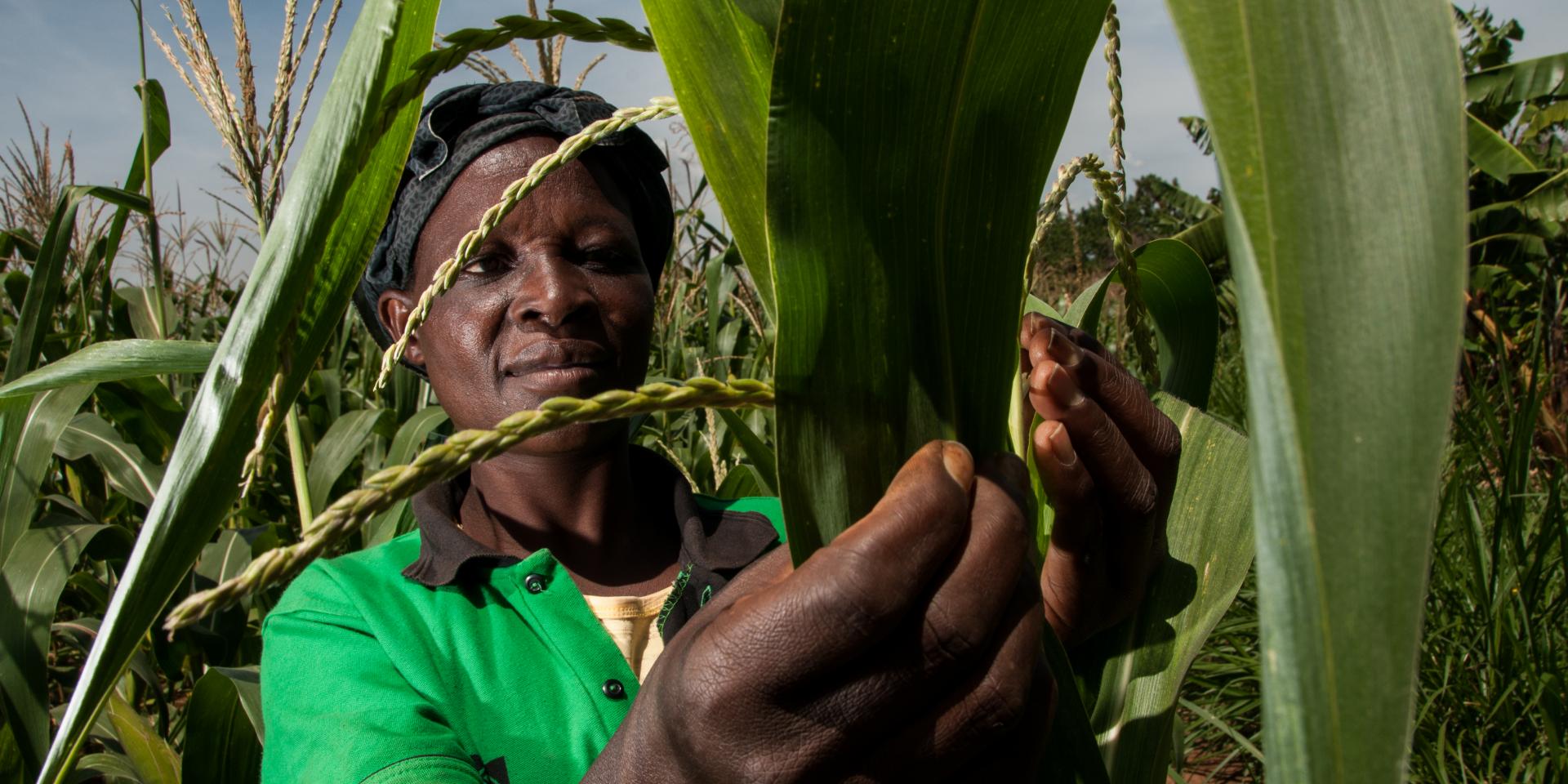
Tools for ensuring that the new crop varieties and livestock breeds respond to the needs, preferences and constraints of both women and men farmers.
Why are these tools important?
Even with modern genetic tools, it takes years, and a lot of money, to develop a new crop variety or livestock breed. This effort is wasted if farmers are not interested in planting the new variety, and if consumers won’t buy it. A new crop variety can be successful if plant breeders create the types of crops that people want, but that entails addressing the needs of many different users. In the end, it is farmers, processors and consumers—at least half of whom are women—who will be putting new varieties into use.
The G+ tools can ensure that new crop varieties and livestock breeds respond to the needs, preferences and constraints of both women and men farmers.
Who are these tools for?
Scientists working in crop and livestock breeding programs can use the tools to meaningfully think through social inclusivity, especially women’s trait preferences, and the particular circumstances of different contexts, recognizing that one size does not fit all.
In the end, breeders, farmers, food processors and consumers will benefit from understanding the traits that different people want in different crops. Varieties that farmers want to plant, that consumers want to buy, will contribute to poverty alleviation and inclusive development.
How can I use these tools?
The G+ approach for gender-responsive breeding offers an integrated, systematic and evidence-based protocol for breeding new crop varieties. The tools build on work by the CGIAR Excellence in Breeding (EiB) Platform on the concept of a “product profile”, which describes the traits that women and men want in a new variety, giving plant breeders a target.
The G+ approach complements this with two additional tools: The G+ plus customer profile characterizes client groups targeted for new varieties, considering gender differences in knowledge, assets and decision-making that influence adoption. This makes it easier for breeders to develop the right product for the right customers. The G+ product profile query tool guides collection of evidence to prioritize the traits in product profiles by examining both potential positive gender impacts of those traits, but also any negative impacts they might have.
When and how was it developed?
The tools were developed by the CGIAR Gender and Breeding Initiative (GBI) since 2018, and are being jointly piloted with the CGIAR Excellence in Breeding Platform (EiB) on a selected set of breeding programs. More tools are planned.
Where can I learn more?
Learn more via the CGIAR Research Program on Roots, Tubers and Bananas (RTB) or the publications below.
Publications
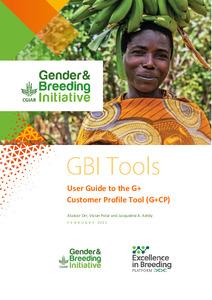
User Guide to the G+ Customer Profile Tool (G+ CP)
Orr, A., Polar, V. and Ashby, J.A. (2021). User Guide to the G+ Customer Profile Tool (G+ CP). CGIAR Research Program on Roots, Tubers and Bananas, User Guide 2021-1. International Potato Center: Lima, Peru. www.rtb.cgiar.org/gbi.

User Guide to the G+ Product Profile Query Tool (G+ PP)
Ashby, J.A. and Polar, V. (2021). User guide to the G+ product profile query tool (G+PP). CGIAR Research Program on Roots, Tubers and Bananas, User Guide 2021-2. International Potato Center: Lima, Peru. www.rtb.cgiar.org/gbi
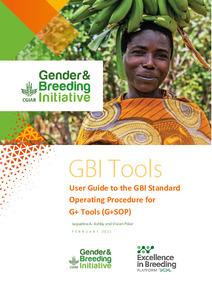
User guide to the standard operating procedure for G+ tools (G+SOP)
Ashby, J.A. and Polar, V. (2021). User guide to the standard operating procedure for G+ tools (G+SOP). CGIAR Research Program on Roots, Tubers and Bananas, User Guide. 2021-3. International Potato Center: Lima, Peru. www.rtb.cgiar.org/gbi.
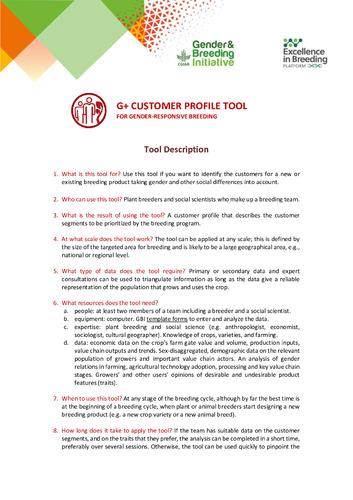
Description sheet to the gender plus customer profile tool (G+CP)
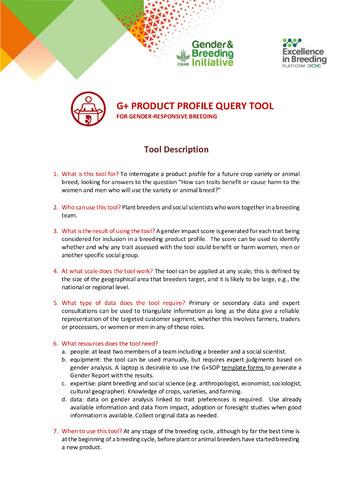
Description sheet to the gender plus product profile query tool (G+PP).
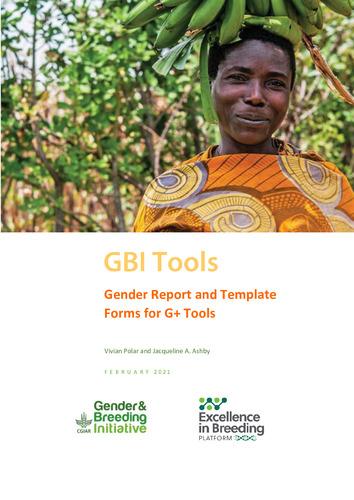
Gender Report and template Forms for G+ Tools
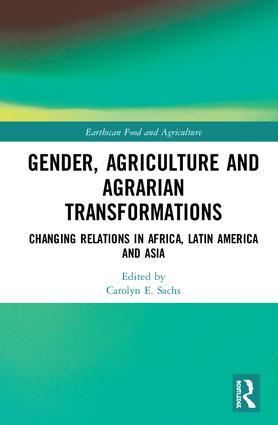
The implications of gender relations for modern approaches to crop improvement and plant breeding
